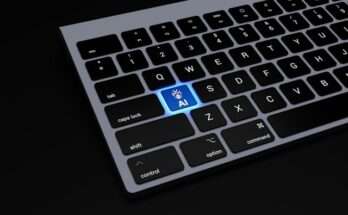The five elements of UX design framework are:
- User research: This involves gathering information about the users of a product or service, including their needs, goals, and behaviors.
- Information architecture: This involves organizing and structuring the content and functionality of a product or service in a way that is intuitive and easy to use.
- Interaction design: This involves designing the interactions and experiences that users have with a product or service, including the user interface, navigation, and other elements.
- Visual design: This involves creating a cohesive and aesthetically pleasing visual design for a product or service, including the use of color, typography, and imagery.
- Usability testing: This involves testing a product or service with users to identify any issues or improvements that need to be made in order to provide a better user experience.
There’s no one-size-fits-all answer when it comes to UX design frameworks – it really depends on the specific project and team requirements. However, there are some commonalities between successful frameworks that can be applied to any project. A good UX design framework will provide a clear structure and flow for the design process, while still allowing for flexibility and creativity. It should be easy to use and understand and should be scalable so that it can be used on projects of any size. here are Five elements of UX design framework

- How Can a UX Designer Work with Developers?
- User needs and goals
- UI design Context
- User Interface
- Information architecture
- Graphic design
- Conclusion (The Real Value of User Experience and User Interface Design)
Common features of successful UX design frameworks include:
- – A clear and concise methodology
- – A focus on user needs and goals
- A collaborative approach
- A flexible and adaptable framework
- A focus on continuous improvement
Five elements of UX design framework
How Can a UX Designer Work with Developers?
Dealing with developers is an inevitable part of a UI designer’s job. As a UI designer, you are responsible for creating all visual aspects of your product. Developers, on the other hand, tend to focus on creating functional and clean code. That said, both sides need to work together in order to create user-friendly experiences.
Here are five tips on how a UI designer can work well with developers What Is UI Design?: UI design is about more than just making things look pretty. It’s about making sure that users can interact with products easily and intuitively, without getting confused or frustrated along the way. A great example of a UI designer at work would be someone who designs mobile apps.
User needs and goals
One key to a good UI is helping users achieve their goals. For example, if your website is intended to attract new business leads and donations, you should create a user interface that not only meets but exceeds those needs. When you know your users’ goals and meet them effectively, they’ll feel satisfied with your product and be more likely to keep using it.

Your UI design might not be what attracts them initially—it’s how well it serves their needs over time that really makes or breaks your site’s user experience. What are my customers’ most important needs? How can I help them achieve those goals? These are questions every web designer should ask themselves regularly when designing an application or website from scratch. The answers will ultimately determine whether your project succeeds or fails.
UI design Context
A designer creates experiences, but not just any experience. An exceptional experience can be differentiated from others by a number of factors, with user experience being one of them. As UI designers, we must build solutions that cater to our user’s core needs and desires; we do so by considering several key factors:
User Pain Points: We take stock of what is currently out there for users. What are their pain points? What is missing? How do they currently accomplish tasks? Brainstorm solutions and give voice to these nagging issues you’ve come across in your daily work as a UI designer. This will also help you identify opportunities where your brand can be differentiated as a leading authority that solves problems.
User Interface
The main interface between a user and a program. The UI is what users see and interact with. While user interface (UI) generally refers to a computer’s interaction, it may also refer to mobile phones, cars, etc., or any device with an interactive network connection or display. A notable example of such a non-computer UI is clicker training for dogs. In computing, user interfaces are designed to help people use their computers in easily understandable ways.
In practice, designing effective UIs has always been difficult because there are many competing considerations that need to be balanced against each other. For instance, one needs to consider how easy it is for people who have never used your system before to start using it effectively; but on the other hand, you also want your system to work well enough that experienced users can perform complex tasks quickly and efficiently; but on the other hand, you don’t want experienced users so overwhelmed by the complexity that they get frustrated and give up; but on yet another hand you don’t want newbies getting so frustrated by the simplicity that they never learn how powerful your system really is…and so on.
Information architecture
Responsible for how a site’s information is organized, IA can be as simple as organizing topics into groups or as complex as building an entire product that doesn’t exist yet. The key to success here is understanding who your target users are and what they need to accomplish. For example, you could create a hierarchy of categories by determining if certain articles are subtopics of others or if certain sections need to be written before others.
Graphic design
A graphic designer takes your brand’s message and creates a way to communicate it visually, which is why you need one for your website. Your company logo is important for branding purposes; if people see it and know what company it belongs to, that’s good! Designers will also create promotional graphics—like an illustration or a photo collage—that can be used on social media platforms.
And they’ll come up with concepts for print materials like business cards and flyers. The best graphic designers are detail-oriented and have solid organizational skills because they’re working with many different pieces at once. They should also have excellent presentation abilities so that they can convey their designs effectively to clients over meetings or virtual conferences.
Conclusion –
The Real Value of User Experience and User Interface Design
The real value in designing with a focus on user experience and the user interface is that it helps you connect with your target users. User experience is not just about making sure that your website is technically up to snuff; it’s also about anticipating what problems you can help users solve by offering your product. It’s crucial to study how people interact with products—and why they are drawn to some more than others—so that you can be thoughtful about how your product addresses their needs. Armed with a better understanding of why users behave as they do, it becomes possible to use that knowledge for good: creating and refining products that really speak to people.



